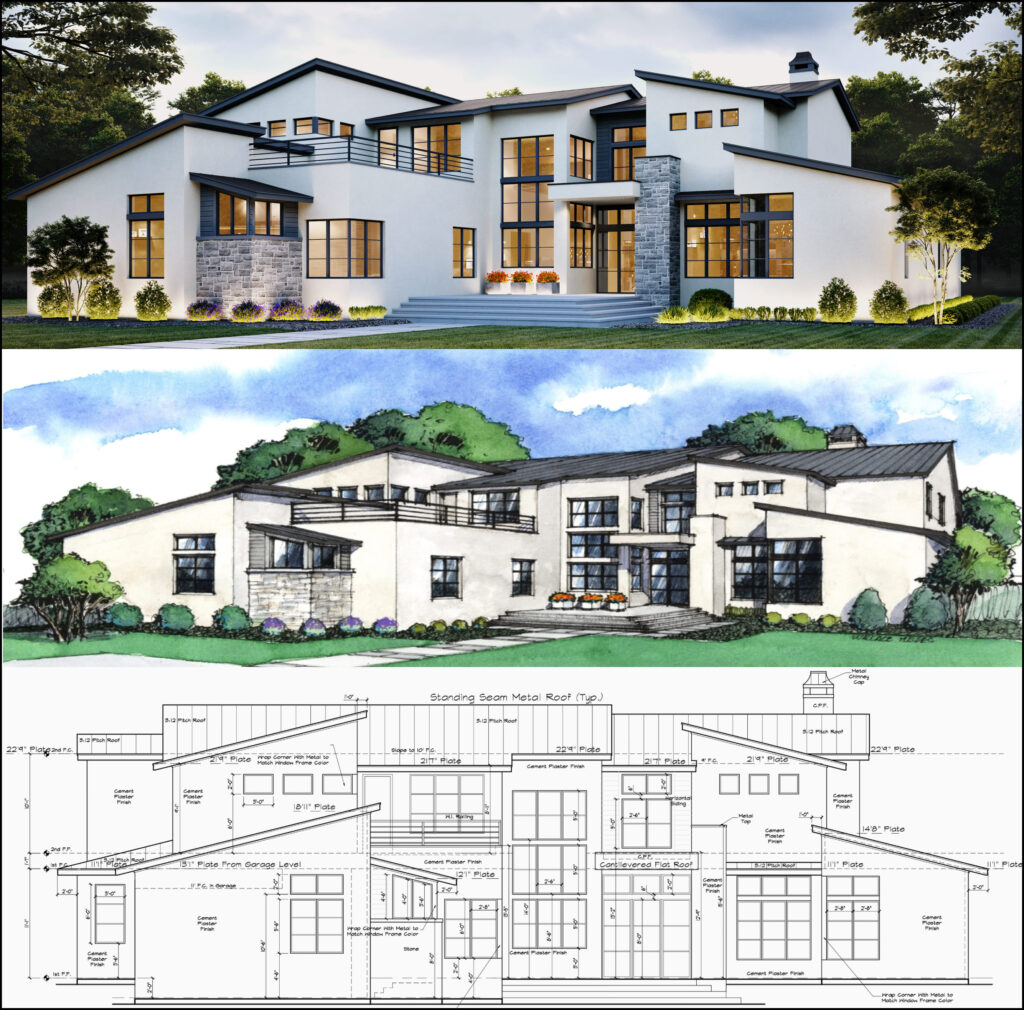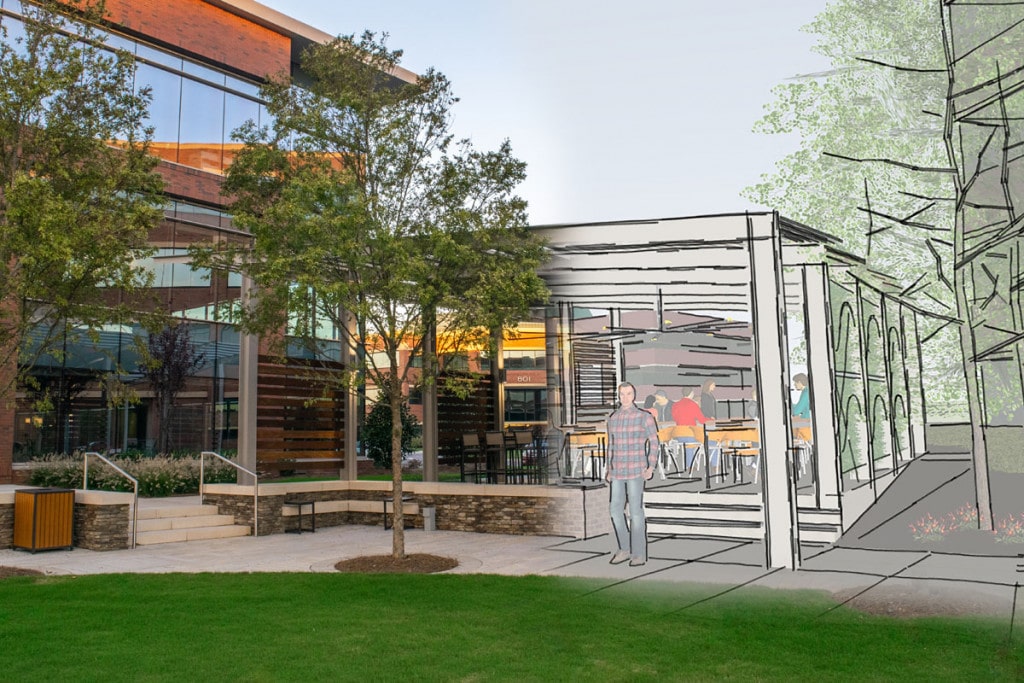How CDA Architects Provide Cutting-Edge Solutions for Sustainable Style
How CDA Architects Provide Cutting-Edge Solutions for Sustainable Style
Blog Article
The Essential Role of an Architect fit Lasting Urban Environments for Future Generations
The function of a designer in crafting lasting city settings is increasingly crucial in reacting to the difficulties of climate modification and urbanization. By effortlessly incorporating ecological principles into their layouts, designers not just improve the aesthetic and practical high quality of metropolitan areas but also address pressing concerns such as power performance and social equity.
Recognizing Lasting Urban Design
Sustainable city style incorporates environmental concepts with city planning to create atmospheres that are not just livable however also resistant. This technique highlights the value of including natural systems into the urban material, making certain that advancement fulfills the requirements of the here and now without compromising the ability of future generations to meet their own requirements. Crucial element of lasting urban style include reliable land use, the promotion of biodiversity, and the assimilation of green spaces, every one of which add to improved lifestyle for homeowners.
Furthermore, lasting metropolitan layout focuses on the reduction of the metropolitan warm island impact, improved air high quality, and effective stormwater administration. It motivates using renewable energies and energy-efficient structure practices, which substantially reduced carbon impacts. Furthermore, sustainable city design fosters social equity by developing obtainable public spaces and promoting mixed-use developments that cater to diverse populaces.
Via thoughtful preparation and ingenious style methods, sustainable metropolitan atmospheres can improve community durability against climate change while fostering financial advancement. This alternative technique not just addresses instant urban challenges however additionally prepares for much healthier, extra sustainable cities for generations to find.
Key Responsibilities of Designers
Engineers play a crucial function in shaping sustainable city atmospheres by converting layout concepts right into concrete frameworks and rooms. Their responsibilities encompass a broad array of activities that contribute to the overall success of city layout tasks.
Firstly, engineers conduct comprehensive website analyses to understand the environmental, social, and social context of their projects. This fundamental expertise informs their style decisions, guaranteeing that buildings harmonize with their surroundings. They also take part in collaborative procedures with stakeholders, including city planners, designers, and the community, cultivating a comprehensive method to urban development.
In addition, engineers are tasked with producing designs that maximize power effectiveness, resource conservation, and performance. They should follow local zoning laws, developing codes, and sustainability qualifications, making sure conformity while pressing the borders of technology.
Moreover, architects are in charge of handling the design procedure, collaborating with numerous professionals throughout the building and construction phase to make certain that the vision is realized properly (cda architects). Ultimately, their role is not only regarding visual appeals; it has to do with developing durable, adaptive rooms that enhance the top quality of life for existing and future generations, laying the foundation for lasting urban living
Innovative Materials and Techniques

In addition, developments in innovation have caused the advancement of high-performance materials, such as shielded concrete types (ICFs) and photovoltaic or pv glass, which add to energy preservation and harness renewable resource. Methods such as passive solar style and environment-friendly roof coverings better exhibit how style can integrate with natural systems, lowering reliance on synthetic cooling and heating.
Furthermore, the assimilation of smart materials, which adjust to ecological modifications, provides promising avenues for enhancing building performance. These materials can react to temperature fluctuations or dampness degrees, maximizing convenience and sustainability.
Ultimately, the strategic option and application of innovative products and methods equip engineers to develop city areas that are not only practical and cosmetically pleasing however additionally resilient and eco responsible, guaranteeing a lasting future for generations ahead. cda architects.
Community Interaction and Cooperation
The success of cutting-edge products and methods in lasting city architecture is substantially enhanced by active neighborhood interaction and collaboration. Designers need to click here for more info recognize that the built setting profoundly affects the lives of local homeowners, making it critical to involve them in the layout procedure. Engaging the community cultivates a sense of ownership and responsibility, making sure that advancements not just meet aesthetic and useful needs but additionally mirror the values and ambitions of those who inhabit them.

Successful area involvement also helps in focusing on social equity within metropolitan development. By thinking about the voices of marginalized populaces, engineers can create rooms that are comprehensive and equitable. By doing this, community interaction and partnership become important to accomplishing truly lasting urban atmospheres that offer the needs of present and future generations.
Future Patterns in Lasting Architecture
An arising focus on flexible reuse and round economic situation principles is set to redefine the landscape of sustainable style. As cities grapple with raising population thickness and environmental obstacles, designers are progressively turning to methods that enhance existing structures instead than going after new builds. This technique not only preserves cultural heritage however additionally dramatically reduces resource intake and waste.
Furthermore, improvements in modern technology are shaping future patterns in lasting design. The assimilation of smart materials and structure systems enables real-time power monitoring, boosting performance and decreasing carbon impacts. Advancements such as environment-friendly roofs, living wall surfaces, and energy-generating exteriors are ending up being conventional methods, further advertising ecological equilibrium within metropolitan environments.
Additionally, a shift towards biophilic design is getting grip, highlighting the link in between nature and human wellness. By incorporating natural environments, architects produce spaces that foster mental wellness while advertising biodiversity.
Verdict
Finally, architects are essential in progressing sustainable metropolitan atmospheres through their proficiency in style, ingenious materials, and neighborhood interaction. By prioritizing energy performance and resource conservation, these professionals add to the production of resilient urban areas that satisfy the needs of existing and future generations. The combination of ecological principles not just improves site livability yet also cultivates social equity, making sure developments reverberate with the values and desires of the neighborhoods they offer.
Report this page